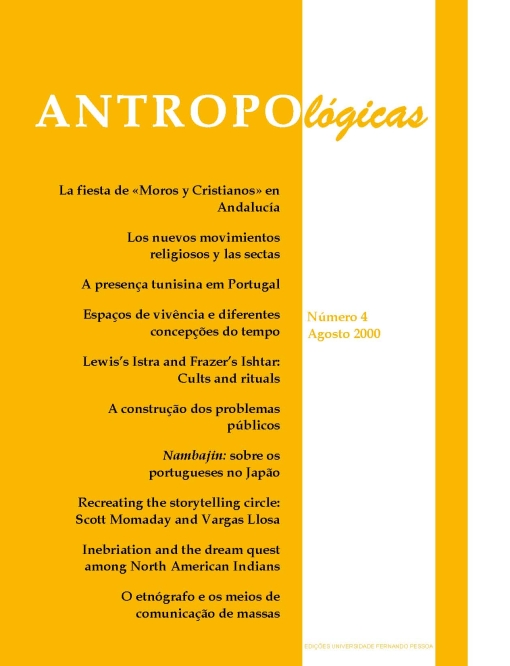Recreating the storytelling circle: N. Scott Momaday and Mario Vargas Llosa
Resumen
Segundo este artigo, a produção ficcional dos nativos americanos do século vinte é caracterizada pela unidade social e estética que envolve as personagens da história tal como a relação entre o autor e o leitor. O último envolve-se na leitura imaginativa e interactiva, preenchendo os espaços brancos da narrativa do autor. Assim, a imaginação doleitor torna-se crucial para converter a história em uma actividade contínua e criativa. Quando contam as suas histórias, N. Scott Momaday e Mario Vargas Llosa tentam preservar as culturas da sua origem não apenas re-imaginando as histórias antigas, mas também seguindo a prática tradicional de contar histórias. Desta maneira, The Way to Rainy Mountain de Momaday e El hablador de Llosa oferecem uma alternativa à ‘dominação monológica do texto da cultura dominante’. Através do uso da língua e da imaginação, estas obras convidam o leitor a prosseguir na sua procura de ‘identidade unificada’.Descargas
Número
Sección
Artículo de fondo
Licencia
Los autores que publican en esta revista están de acuerdo con los siguientes términos:
- Los autores conservan los derechos de autor y garantizan a la revista el derecho de ser la primera publicación del trabajo al igual que licenciado bajo una Creative Commons Attribution License que permite a otros compartir el trabajo con un reconocimiento de la autoría del trabajo y la publicación inicial en esta revista.
- Los autores pueden establecer por separado acuerdos adicionales para la distribución no exclusiva de la versión de la obra publicada en la revista (por ejemplo, situarlo en un repositorio institucional o publicarlo en un libro), con un reconocimiento de su publicación inicial en esta revista.
- Se permite y se anima a los autores a difundir sus trabajos electrónicamente (por ejemplo, en repositorios institucionales o en su propio sitio web) antes y durante el proceso de envío, ya que puede dar lugar a intercambios productivos, así como a una citación más temprana y mayor de los trabajos publicados (Véase The Effect of Open Access) (en inglés).


